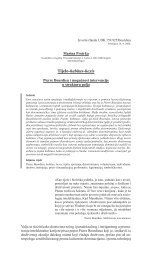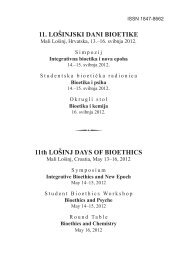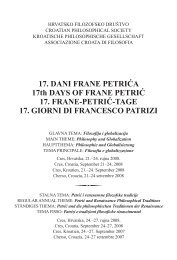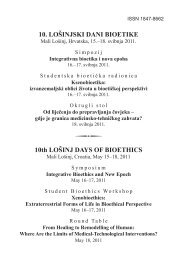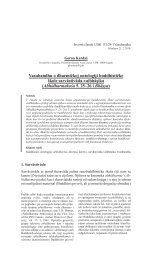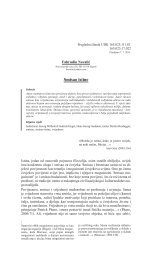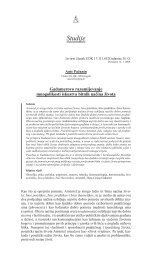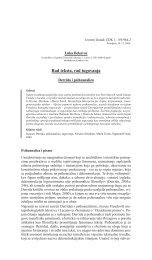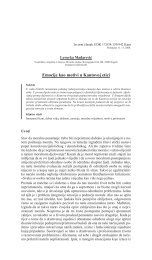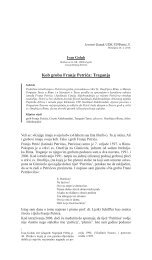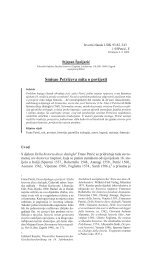Programska knjižica - Hrvatsko filozofsko društvo
Programska knjižica - Hrvatsko filozofsko društvo
Programska knjižica - Hrvatsko filozofsko društvo
You also want an ePaper? Increase the reach of your titles
YUMPU automatically turns print PDFs into web optimized ePapers that Google loves.
professorship is the same as a chair.) There are now 132 members of the Committee<br />
of Vice-Chancellors and Principals (CVCP), and all the institutions they<br />
head answer to a huge new bureaucracy called the Higher Education Funding<br />
Council for England and Wales (HEFCE). HEFCE and the CVCP jointly finance<br />
another body called the Quality Assurance Agency (QAA). Money for<br />
research also comes to the universities through the Research Councils, and,<br />
for science, from contracts with government and industry. It is significant that<br />
the science research councils come under the government Dept of Trade and<br />
Industry and are formally required “to distribute their funds in such a way as to<br />
facilitate the creation of wealth (…); they have businessmen as chairmen and<br />
a substantial lay membership.” <br />
Since 1992, all universities compete for funds on an equal footing; all must<br />
follow the same rules and apply the same standards. Officially all degrees are<br />
equal. I doubt if there is anyone who believes this, but it is one of the lies we now<br />
have to tell. By nearly doubling overnight the number of university students, 10<br />
teachers and vice-chancellors the government cannot possibly have preserved<br />
standards in any of those bodies, but it is virtually tabu to say that this is government<br />
by make-believe and that the emperor has no clothes. The emasculation of<br />
the CVCP is particularly serious. This body never had much power but it would<br />
stand up for the universities. Now numbering 132, it is far too unwieldy to be<br />
effective, and not only includes many men (of course, hardly any women) who<br />
are not academics at all, but plenty of yes-men 11 and careerists – some of whom<br />
make excellent use of their devolved power to determine their own salaries.<br />
2) The quantitative story<br />
In 1961, 5% of young people in Britain received higher education; in 1997<br />
the percentage was 34, 12 and the government’s declared policy is to raise it to<br />
50. Over the last twenty years the number of students has more than doubled,<br />
<br />
Scotland and Northern Ireland have their parallel controlling bureaucracies.<br />
<br />
Quotation from Sir Keith Thomas’s Presidential Address to the British Academy, 1997,<br />
ms, p. 2.<br />
10<br />
The number of students in higher education was of course unaffected by this move, but<br />
was expanding rapidly in any case.<br />
11<br />
At times the CVCP even goes over to the enemy. “We were alarmed to see that the Committee<br />
of Vice-Chancellors and Principals has recently called for ‘a national policy’ for the humanities,<br />
urging that a Research Council for the Humanities and Arts should identify ‘national<br />
aspirations, needs [and] objectives’. … We are sceptical about so dirigiste an approach.” Sir Keith<br />
Thomas, loc.cit. in fn.8.<br />
12<br />
Figures in this paragraph have been supplied by the AUT; some of those in the Dearing<br />
Report are slightly different. For more statistics on the expansion, see Appendix 1.<br />
198



